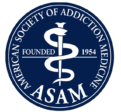Most addictive drugs can be found all across America. The CDC’s National Center for Health Statistics reports on the percentage of the U.S. population that uses substances. Over one month in 2019., the rates of substance abuse for people over age 12 included:
- 13% — Illicit drug use
- 50.8% — Alcohol use
- 26% — Tobacco use
According to the Recovery Research Institute, addiction is “a primary, chronic, neurobiological disease with genetic, psychosocial, and environmental factors influencing its development and manifestation.” Simply put, addiction is the compulsive need to use an addictive substance regardless of the negative consequences.
The Top 5 Most Addictive Drugs
The main reason addictive drugs can pose the risk of abuse and dependence is due to the strong sense of euphoria they create. After repeated use, chemically addictive drugs train the brain to release less and less of the “pleasure chemicals,” which results in physical dependence on the drug, making it difficult to stop using them.
In general, the most addictive types of drugs include those in the opioid, stimulant, and depressant categories. That being said, which drugs are addictive?
The top five most addicting drugs in the world include:
- Heroin
- Cocaine
- Methamphetamine (meth)
- Alcohol
- Nicotine
Drugs considered to be highly addictive substances play a large role when it comes to dangers associated with addiction. Below are the most addictive drugs ranked by their potential for abuse and ability to result in severe psychological and physical dependence.
Heroin: The #1 Most Addictive Drug
Heroin is an opioid drug made from the opium poppy plant. Typically, the illegal drug is a white or brown powder that is injected, snorted, or smoked. However, the drug can also be found as a black sticky substance, called “black tar heroin.”
According to the NIDA, heroin is an illegal, highly addictive substance that triggers a powerful “rush” of euphoria and well-being. Commonly seen as the number one addictive substance, heroin affects the body by binding to opioid receptors in the brain and spinal cord.
In fact, when injected, heroin enters the bloodstream and goes to the brain very quickly. This triggers a near-immediate onset of euphoria but can also slow your heart rate and breathing, which can be dangerous. Alternatively, the high from snorting or smoking heroin is usually less intense and happens more slowly than when injected.
Regardless of how the drug is taken, when heroin enters the brain, it is converted back into morphine, which is in the opium seed pod that heroin is made from. This change in the brain chemistry causes an intense feeling of pleasure, called a “high.” One of the most dangerous aspects of heroin is how it interacts with the brain’s mu-opioid receptors. These receptors are involved in pain relief, reward, and addictive behaviors.
Unfortunately, the most addictive qualities of heroin are a large contributor to America’s current opioid epidemic. According to the 2020 National Survey on Drug Use and Health, over 690,000 Americans (aged 12 and older) have a heroin use disorder. The survey also reports that more than 13,000 people died in the United States from an overdose involving heroin in 2020. If you or someone you know is struggling with an addiction to heroin, receiving treatment can prevent overdose and death.
The Second Most Addictive Drug
Methamphetamine is an illegal and highly addictive semi-synthetic stimulant. Also commonly referred to as meth, the drug is a man-made drug that is typically smoked, injected, snorted, or swallowed in a pill. Due to its crystal-like appearance, two of its popular street names are “crystal meth” and “ice.”
In general, meth is one of the most potent stimulant drugs available. It is estimated that methamphetamine is about three times more potent than cocaine. This means it takes much smaller amounts of meth to produce a more intense high.
To produce an intense high, methamphetamine interacts with the brain by increasing the release of dopamine, a neurotransmitter that triggers feelings of pleasure and reward. Meth also inhibits the reuptake of dopamine, which means that more dopamine is available and absorbed in the brain.
As a result, meth triggers an overwhelming sense of euphoria while increasing your alertness, focus, and energy. Compared to the effects of other stimulants which can last for a few minutes or a couple of hours, the “high” produced by meth can last up to 12 hours. The euphoric effects of meth are also incredibly intoxicating, leaving a person wanting more. As a result, people who abuse methamphetamine will often go on binges, during which they use the drug repeatedly over a period of days or weeks. Binging meth can quickly develop into an addiction.
According to the CDC, 2.5 million Americans (aged 12 or older) reported using methamphetamine in 2020. According to SAMHSA, 1.5 million people (aged 12 or older) in the United States met the criteria for a methamphetamine use disorder in 2020.
Methamphetamine is a very addictive drug, making it difficult to quit, but it is possible to recover with treatment. If you or someone you know is abusing methamphetamine, get help today.
The Third Most Addictive Drug
Made from fermented grain or fruit, alcohol is a liquid containing ethanol. People typically consume the drug in alcoholic beverages such as beer, wine, or liquor. Sold in bars, restaurants, supermarkets, convenience stores, gas stations, and, of course, liquor stores, it’s no wonder alcohol is the most commonly used and abused drug in the world.
Known for producing a feeling of relaxation, alcohol affects the body by binding to the GABA receptors in the brain. This leads to the pleasurable effects of alcohol use but can also lead to decreased heart rate and breathing, which can be dangerous.
According to the 2020 National Survey on Drug Use and Health, of the United States population (aged 12 or older):
- 50% used alcohol in the past month
- 138.5 million were current alcohol users
- 61.6 million were binge drinkers
- 17.7 million were heavy drinkers
Many people consider alcohol to be the number one addiction in the world. After all, an estimated 95,000 people die from alcohol-related causes annually. However, alcohol is also the third leading preventable cause of death in the U.S., and that’s behind nicotine and poor diet/exercise.
Alcohol is a depressant drug that slows down the body’s systems, producing feelings of pleasure and relaxation. Due to its impact on the brain’s central nervous system, large amounts of alcohol can lead to dangerous consequences such as fatal alcohol poisoning.
Withdrawal from alcohol can also result in delirium tremens (DTs), a severe, potentially deadly reaction that can affect long-term drinkers who attempt to quit drinking on their own. It is essential to seek medical help when withdrawing from alcohol, as it can be dangerous and deadly.
The Fourth Most Addictive Drug
Cocaine, also known as “crack” or “coke,” is a powerful stimulant that increases alertness, feelings of well-being, and euphoria. This highly addictive drug comes from the leaves of the coca plant. Cocaine is a white powder drug that people typically snort, inject, or smoke.
Outside of the 2020 pandemic-related pause, the use of cocaine has continued to increase across the globe. According to the United Nations’ World Drug Report 2022 (WDR 2022), approximately 21.5 million people (aged 15–64) used cocaine at least once in 2020. An estimated 6.4 million people in North America used cocaine in 2020. More North Americans used cocaine than any other continent’s population in the world.
Most of cocaine’s popularity is because it is a very potent drug. In other words, a small amount of cocaine can trigger an intense rush of energy and euphoria. Unfortunately, this is also one of the reasons why cocaine is so addictive—it doesn’t take much to get hooked.
On a chemical level, cocaine produces a high by blocking the reuptake of dopamine in the brain. As a result, cocaine produces a short-lived, intense high followed by an unpleasant crash.
This crash—cocaine withdrawal—can include symptoms such as anxiety, irritability, and depression. In order to stave off the crash, people often binge on cocaine, taking the drug over and over in a short period of time to maintain their high.
More often than not, cravings and withdrawal symptoms are what make cocaine one of the most addictive drugs. If you or someone you know is struggling with cocaine addiction, help is available. There are many treatment options available that can help you get on the road to recovery.
The Fifth Most Addictive Drug
Nicotine is a stimulant drug that is in tobacco products such as cigarettes, cigars, and chewing tobacco. It is also available in e-cigarettes and vapes. Nicotine products are highly addictive and can lead to several different types of cancer.
Nicotine affects the body by binding to the nicotinic acetylcholine receptors in the brain. This leads to the pleasurable effects of nicotine use but can also lead to increased heart rate and blood pressure, which can be dangerous.
According to the CDC, long-term cigarette smoking is the leading cause of preventable disease, disability, and death in the United States. The fact that smoking harms nearly every organ of the body begs the question: is nicotine the most addictive drug?
A huge issue lies in America’s priorities, specifically the legal marketing practices and accessibility of extremely addictive nicotine products. The tobacco industry spends billions of dollars each year on marketing, fueling critics’ claim that they’re targeting impressionable people into thinking that smoking cigarettes and vapes is “cool.”
Roughly 1,600 youth try cigarettes for the first time every day. While tobacco products are only legal for people 18 years or older, that doesn’t stop young people from illegally purchasing addictive substances like nicotine and alcohol, not to mention illicit drugs like cocaine and heroin.
As of 2020, roughly 58 million people (aged 12 or older) used nicotine products in the past month according to SAMHSA’s 2020 National Survey on Drug Use and Health. In fact, the CDC estimates that nearly 40 million people in the U.S. currently smoke cigarettes. However, many cigarette smokers want to quit smoking. Unfortunately, just like cocaine, heroin, and alcohol, if you try to stop smoking cigarettes or chewing tobacco on your own, you will likely experience withdrawal symptoms.
What Makes Drugs Addictive?
Drug addiction is a chronic disease that causes compulsive drug seeking and use despite harmful consequences. People often consider drugs to be the most addictive thing in the world. This is often due to the fact that most addictive drugs take control of a person’s life during addiction, regardless of the consequences.
If you struggle with drug addiction, you may experience the side effects of drug withdrawal. While symptoms of drug withdrawal vary depending on the type of drug, a common result of withdrawal is physical and emotional distress that makes it hard to quit on your own.
Unfortunately, drug abuse can be dangerous because it often affects other vital body functions. In fact, withdrawal from certain drugs can result in respiratory and heart complications, seizures, and death. It is vital to seek medical help when withdrawing from addictive drugs, as it can be dangerous to do so on your own.
Drugs’ Effect on Dopamine
Most addictive drugs affect the brain by binding to specific receptors in the brain. This leads to the release of dopamine, the “pleasure chemical.” Typically, the pleasurable effect, or “high,” is the reason why people continue to misuse and abuse drugs. Long-term abuse of the most addictive drugs can lead to physical dependence and addiction.
Drugs and Their Impact on the Brain
Drug addiction is considered a brain disease because drugs change the way your brain works. As a result, drugs impact your brain by rewiring your natural response to pleasure. In doing so, your brain halts the release of dopamine and other chemicals that help you experience positive sensations. The changes can be long-lasting and lead to harmful relapse behaviors seen in people abusing drugs.
Reach Out for Help With Addictive Drugs
As you can see, a variety of addictive drugs have harmful effects on the body and mind. If you or someone you know is struggling with an addiction, it is important to seek help. Withdrawal from drugs can be dangerous, so it is important to detox under medical supervision. Call us now at 877-RECOVERY. Because We Care.












